Did you know?
More than half of Americans (54%) who experience lower back pain – spend most of their workday sitting.
But you don’t need these statistics to know that sitting too much can aggravate back pain and even cause lumbar pain in the first place.
The good news is:
Lumbar pain from sitting all day can be quite easily prevented and solved, and this post will show you the 5 easiest and best ways to fix office-work related back pain.
Overview
Why Does Sitting Too Much Cause Low Back Pain?
Sitting in an office chair for long periods, in this unnatural static posture, increases stress in your back, shoulders arms, and legs.
It especially adds a lot of pressure on your back muscles and spinal discs.
When you sit for hours and hours, you tend to slouch over or slouch down in your chair, which over-stretches the spinal ligaments and strains the discs, muscles, and nerves around it.
Over time, incorrect sitting posture can cause real damage to your spine and worsen your back pain.
Note: If your lower back pain is radiating to your legs and buttocks, this may be a sign of a pinched nerve, Sciatica, or bulging/herniated disc.
And now:
Below you’ll find 5 effective and natural ways to prevent and get rid of back pain from sitting, which won’t require much effort on your part.
5 Ways to Prevent Lower Back Pain from Sitting
When you want to get rid of posture-related low back pain, you’ll have to pay attention to your sitting posture and your chair, and start using a few very helpful tools to relieve your pain naturally and fast.
1. The Best Sitting Posture to Prevent Low Back Pain

Here’s how to get into the best sitting posture for your back:
1. Sit at the edge of your chair and slouch completely.
2. Draw yourself up and accentuate the curve of your back as much as you can, and hold there for 2 seconds.
3. Now, release the position slightly
4. Rest your elbows and arms on your chair or desk, keeping your shoulders relaxed.
You are now sitting in the best posture for your back.
Remember:
You have to keep your hips and knees at a right angle (use a footrest or stool if your chair is too high). Your legs should not be crossed and your feet should be flat on the floor.
The problem is:
This takes time to get used to, and when we work we tend to forget about it and unknowingly slouch back to our usual posture.
The solution:
Either use a good lumbar back support cushion (like this one) or get a good ergonomic office chair (like this one) – to help you keep the right sitting posture for the entire workday.
2. Stretching/Back Traction to Relieve Lower Back Pain
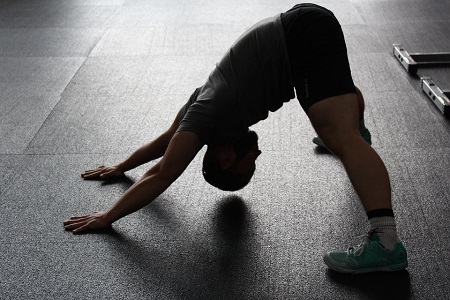
No matter how great your sitting posture and how excellent your chair is – you have to take a few breaks from sitting during the day (at least once an hour).
Use this break to perform a good stretch to relieve your pain, and here are the 2 best options:
A Simple 30-Second Stretch
- Sit in your chair, making sure your sitting bones are firmly in contact with the chair. Keep your feet flat on the floor and placed wide apart.
- Sit up tall and then slowly slide your hands down your legs until you reach the floor. Visualize rolling down one joint at a time, head first.
- Breathe into the stretch and try to slide slightly further down. Hold for 30 seconds.
- Repeat three times.
You can find more simple and effective “deskercises” HERE.
Use a Back Traction Device
For a more powerful stretch, I recommend bringing a compact, portable back traction device to your office space.
Lumbar traction, which is pulling the top half of your body and the bottom half away from each other – can bring instant and lasting lumbar pain relief.
When you do back traction, your aching muscles get a chance to relax and you take a bit of the pressure off your discs.
If you want to take the first stretch to a higher level – without worrying whether you’re doing it right – use the CoreStretch tool:
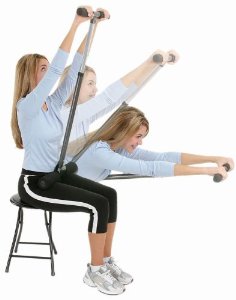
One more back traction option which can be great in your workspace is the True Back traction device:
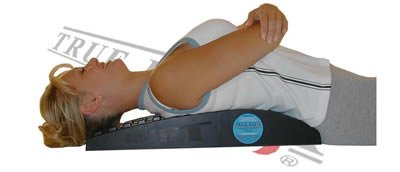
The True Back stretcher is a portable and compact lower back lumbar traction device, and easy to use. No assembly is needed and no parts can break down – ever.
You simply lie on the device, and the 30 suspension points molded into the center rails support your body weight and create pressure on the muscles on each side of the spine.
This pressure allows the muscles to completely relax, which increases blood flow. It decompresses your spine and you are passively stretching in opposite directions while being supported in the correct position.
3. Infrared Light Therapy

If you want to relieve your pain while you sit and work uninterrupted – infrared therapy is one of your best options.
Infrared heat penetrates deep into your muscles, up to 4 cm into your tissues – increasing local blood circulation and bringing pain-relieving and healing components – faster.
Here are the 2 best options:
1. Shiatsu infrared heat cushion – using an infrared heat cushion, combined with infrared heat – is an effective way to relieve lumbar pain without interrupting your work.
For example, this low-cost cushion has 6 deep-kneading rotating nodes with soothing infrared heat and has a car adapter.
2. Infrared heat belt – this Jade infrared heat belt (with negative ions) can be wrapped around your lower back comfortably and is made of high-quality materials.

It comes with a digital controller and a timer – and it’s perfect if you don’t like massage and just want to enjoy the deeply penetrating and soothing heat to relieve your back pain.
Note: do not use infrared heat belts if you are pregnant or suffer from a serious health condition without consulting with your doctor.
4. TENS Unit for Back Pain
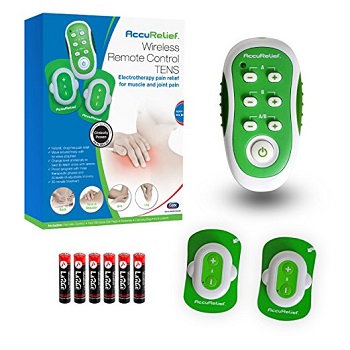
TENS units are one of the most popular drug-free, non-invasive and non-addictive ways to continuously relieve back pain whenever and wherever you need to.
A TENS unit (an electric stimulation unit) delivers low-voltage, non-painful electrical pulses via electrodes placed directly onto the skin around the area of pain.
These pulses control pain signals in the body, creating temporary (from 5 minutes to 18 hours) relief from pain.
Small, wireless TENS machines allow you to use your TENS unit with remote control – without attaching any wires to the electrodes, and without any wires hanging out of your pocket – perfect for office use.
5. Switch to an Ergonomic Office Chair
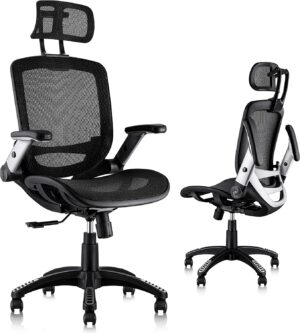
One of the most important things to change when your back hurts from sitting is your chair.
The National Institute of Health recommends choosing a chair with all of the necessary adjustments to support proper posture.
Lower back support in an ergonomic chair is very important.
Sitting for long periods of time without supporting the inward curve of your back causes slouching (which flattens this natural curve) and causes strain to the low back muscles.
How to Prevent Back Pain When Standing Up After Sitting
To prevent back pain when standing up after a long sitting, first move to the front of the seat of your chair. Stand up by straightening your legs. Use your leg muscles to push yourself up, rather than relying on your back. Avoid bending forward at your waist. Then, immediately stretch your back by doing 10 standing backends (gently!).
To your health and happiness,
Meital

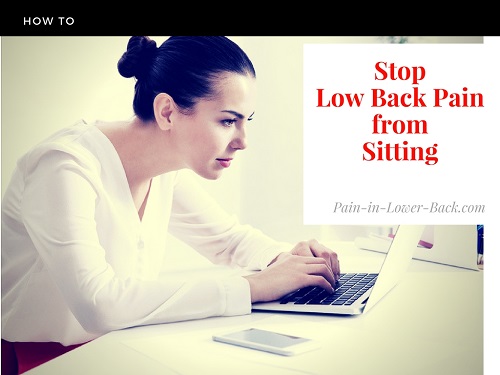


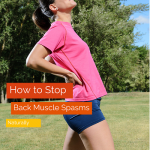
Great article it certainly covered lot’s of reasons back pains are caused and different ways to find pain relief through exercise and proper workouts.
This is very helpful especially for those who are working in front of their computers all day.